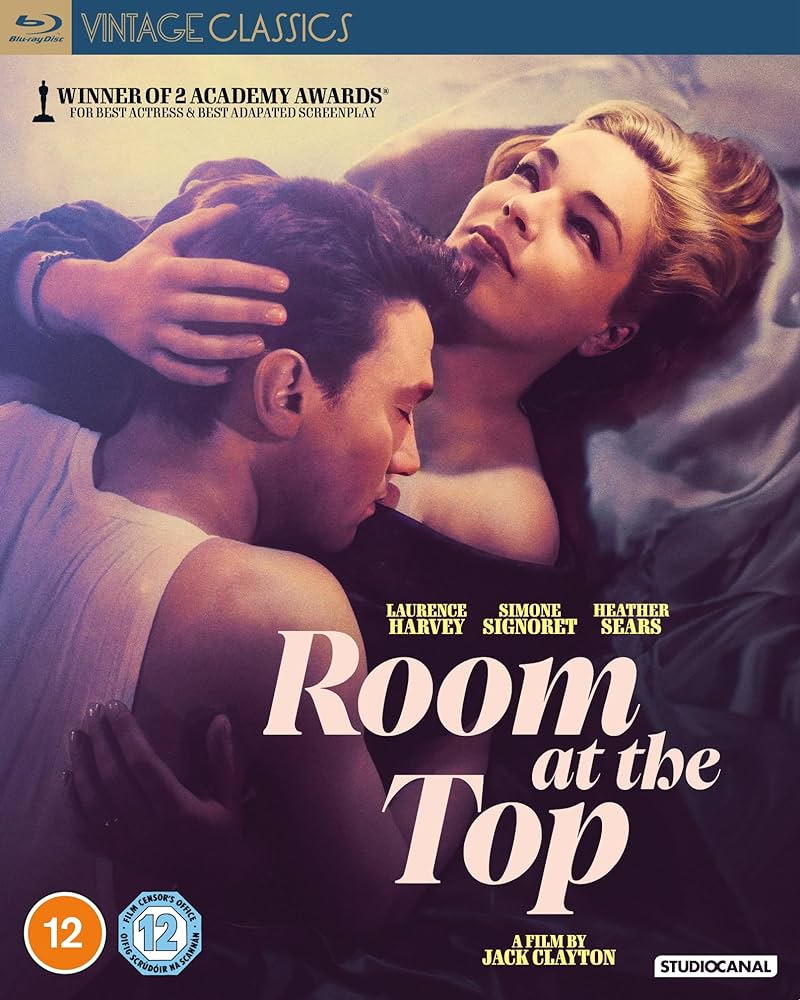With its use of explicit dialogue and explorations of sexual relations – including those of adultery and pre-marital sex – Room at the Top is seen as the film that changed the face of British cinema. Given its subject matter and the controversy surrounding the film, Room at the Top was initially denied a classification by the censors before eventually being granted a compulsory X certificate (considered to be unsuitable for people under the age of 18). This was another watershed moment in British cinema as prior to this horror and/or violence were the principal reasons for a film being afforded such a certificate.
An adaptation of John Braine’s 1957 novel Room at the Top, the film of the same name also achieved landmark status in the British cinema of the late 1950s and early 60s through its radical portrayal of a working-class (anti-)hero, use of regional accents, North of England locations, as well as explorations of class conflict within British society, all of which precipitated this country’s New Wave of social realist dramas. Further cinematic adaptations of contemporary novels and plays quickly followed including Saturday Night and Sunday Morning (1960), A Taste of Honey (1961), A Kind of Loving (1962), Billy Liar (1963), and This Sporting Life (1963).
Room at the Top is set in 1947 in a country just beginning to emerge from a period of post-war austerity before moving into a time of greater economic prosperity. It is filmed in black and white almost entirely on location in Bradford, Halifax, and Keighley in the then West Riding of Yorkshire, the stark monochrome cinematography serving to emphasise the grim industrial surroundings.
Directed by Jack Clayton on his feature-length debut and with a screenplay by Neil Paterson which stays largely faithful to the book, the film stars an ambitious young working-class man Joe Lampton (played by Lawrence Harvey) who moves to a neighbouring town intent on transforming his life and fortunes. His driving force is the pursuit of sex, status, and material possessions. Towards this end he sets his sights on Susan Brown (Heather Sears), the naïve, respectable daughter of a local industrial magnate and “a girl with a Riviera tan and a Lagonda.” But he falls, instead, for Alice Aisgill (Simone Signoret), an older, married woman who exudes sensuality and sophistication.
What follows is a torrid tale of love and sexual desire, ambition, morality, establishment values, class conflict, and social change, highlighting many of the tensions that exist between emotional honesty and financial greed. Looking through a contemporary lens, much of Room at the Top now seems very tame by comparison. It is not without its flaws, either. The authenticity of Lawrence Harvey’s Yorkshire accent is questionable at best and bearing in mind that the film is set in 1947, a number of the actresses are wearing clothes from the 1950s. Some of the motor vehicles also date from that later period.
But bearing in mind that Room at the Top is now 65 years old, the film was most certainly a significant and successful milestone in the history of British cinema. It was nominated for a total of six Academy Awards, winning two: Best Actress (Signoret) – the first for a performance by an actress in a non-Hollywood film – and Best Adapted Screenplay (Paterson). Simone Signoret commands the screen in Room at the Top imbuing the part of Alice with such a beautifully understated intelligence, refinement, vulnerability, and dignity.
Room at the Top is the latest addition to STUDIOCANAL’s Vintage Classics Collection and will be available to own on Blu-Ray, DVD, and Digital from 11th March 2024




